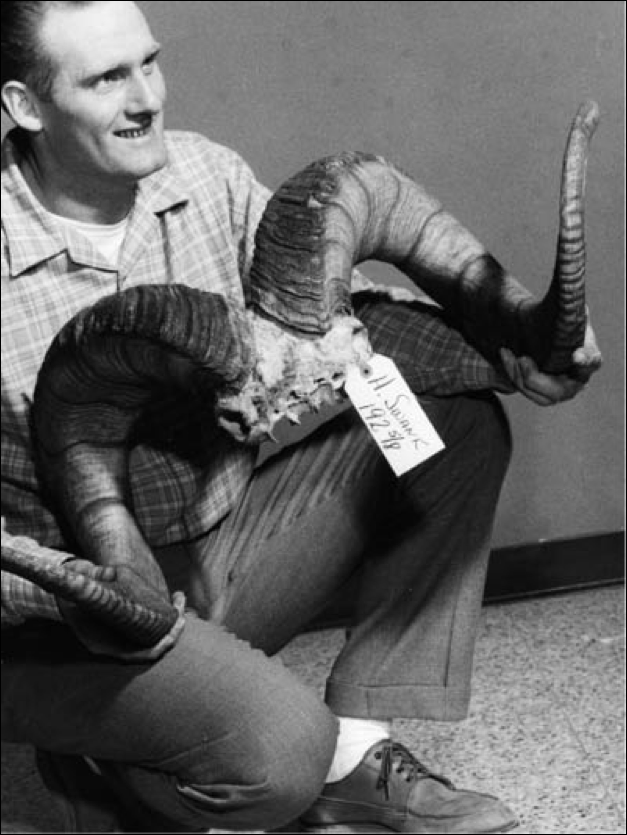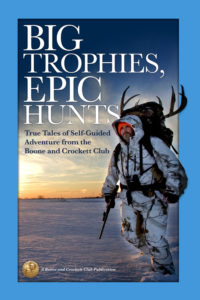As I snugged the .264 against my shoulder, the great Dall’s ram moved closer to the edge of the ridge and peered down curiously. Instinctively I brought the crosshairs to bear, but as my finger tightened on the trigger doubts began to assail me. Should I shoot or wait — try to get a closer look at the sheep? He was a magnificent animal, but did he carry the world-record head that I’d been seeking for seven years?

A man must want a trophy pretty badly to put in all that time, and that man was me. So last season I went into the wild Wrangell Mountains of Alaska with my hunting partner, Perley Jones, and guide, Jack Wilson. From Jack’s base camp at Gulkana we made a number of reconnaissance flights deep into the mountains and finally picked an area far back — one so shockingly rough and remote that it is seldom, if ever, visited by hunters. Then as August faded into September, Jack set us down on a big, tilted glacier, an operation that called for infinite skill. The country was as hostile as any a man is likely to meet: forbidding glaciers bounded by treacherous crevasses and moraines; cliffs whose sheer faces seemed insurmountable; miserable weather.
After a good night’s sleep, Perley and I made a blood-curdling, neck-risking descent down the side of the main glacier into the valley of a lesser one. Moving slowly up the canyon we carefully glassed the surrounding ridges. There were sheep, but nothing that looked like a world record. However, Perley found one to his liking and started a laborious climb up the canyon wall, while I set up our ultralight tent and made camp. Hours later he returned, disappointed: a wolverine had spooked his trophy just as he got within range.
By now it was well into the afternoon, but I decided to have a look at what lay beyond the next hill. The hill proved to be farther away than I’d estimated and the sun was getting dangerously low when I finally glassed the valley beyond it. Seeing nothing, I was about to return to camp when two rams appeared suddenly on a ridge a quarter mile away. One was only a youngster but the other was huge — bigger than any sheep I’d ever seen.
Caught out in the open, there was nothing I could do but try to get closer to the ram, and strangely enough I managed to get within 350 yards of it before the young sheep noticed me and started to act nervous. Groaning inwardly, I dropped to the ground and brought my rifle to bear on the big fellow. But then I hesitated. I wasn’t at all sure he was of world-record stature, and if I shot him my hunt would be over for the year. Maybe —
Wham! The rifle went off almost by itself, before I’d made up my mind. The big ram leaped convulsively, then slumped to the ground. By now it was almost dark. Just time enough to dress the ram and hurry to camp.
Not until next morning did I know my seven-year quest was over. Carefully I measured the curl-and-a-third horns. The head was a new world’s record! Later, the Boone and Crockett Club officially awarded it 189-6/8 points.
Did I say my quest was over? Well I’m not so sure. Someone is almost sure to get the next word-record Dall’s, and it might as well be me!
*****
Harry Swank’s untimely end came just two years later in December 1963 when his plane crashed as he was taking his final solo flight for his twin-engine license. The conservation and trophy hunting world lost a friend and ambassador.
Witness the hard-core determination of North America’s most successful hunters. They combined physical conditioning with research, fair-chase ethics, and shooting prowess to seek out and harvest legendary trophy animals.
Thirty hunters. Thirty record-book trophy big game animals, most of them taken without guides on public lands. Thirty epic tales to share back at hunting camp. These are the real-world stories behind some of the top-scoring trophies ever recognized by the Boone and Crockett Club.



